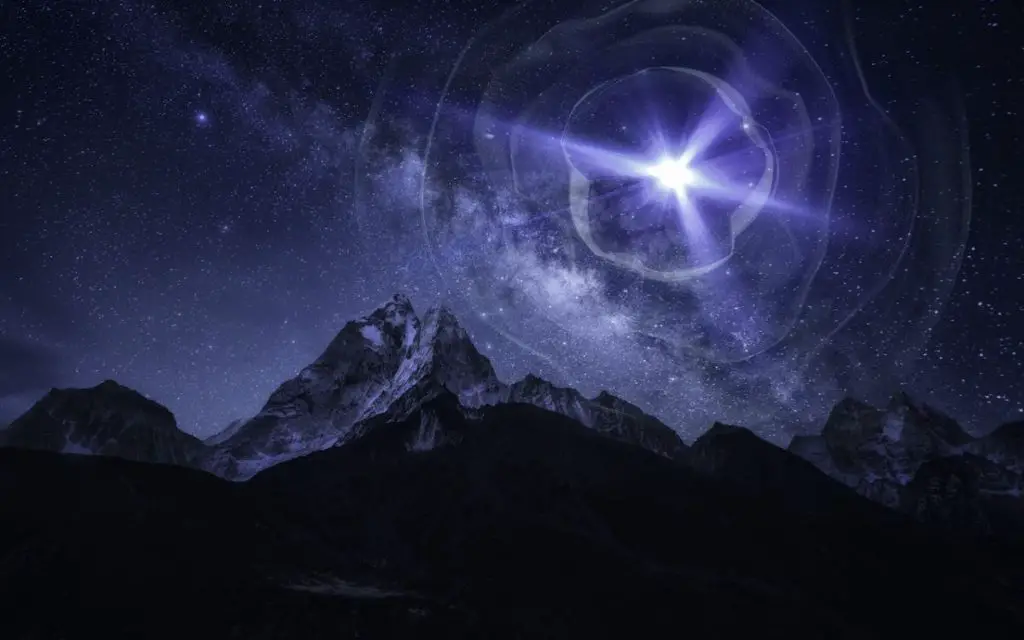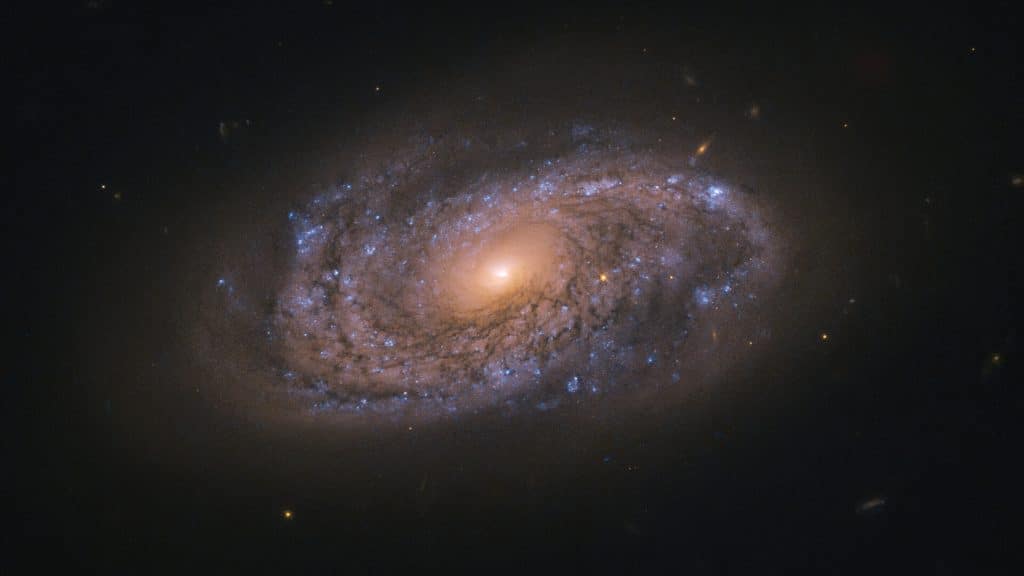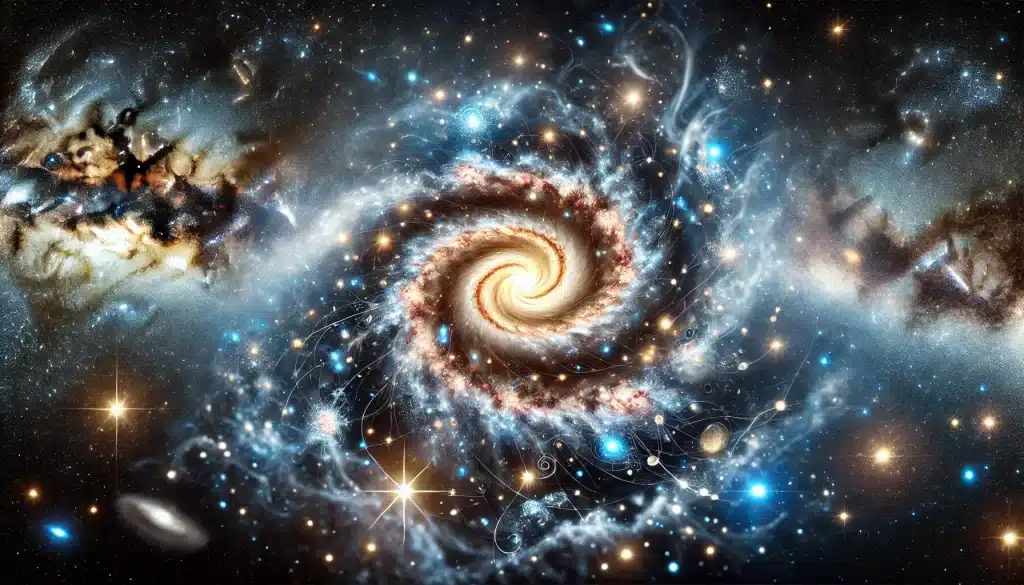For years, astronomers have thought that the fate of the Milky Way was to collide with its neighbor, the Andromeda Galaxy, in a few billion years. But a new simulation finds a 50 percent chance that the impending crunch will end up being a near-collision, at least for the next 10 billion years.
The Future of the Milky Way
“This is a tremendous piece of work,” says Raja Guha Thakurta, an astronomer at the University of California, Santa Cruz, about the new study, published as a preprint on arXiv with the title “Apocalypse when? No certainty of a Milky Way-Andrameda collision”.
“The bottom line is that it is still likely that the two galaxies will collide, but leave enough room for the two galaxies to escape each other.”
Andromeda has been known to be heading toward our home galaxy since 1912, when astronomer Vesto Slipher noticed that its light is blueshifted, or squeezed toward shorter wavelengths by the Doppler effect, in the same way that an oncoming ambulance siren whistles at a higher pitch. At the time, Andromeda’s true size and distance were unknown; many thought that galaxies were “nebulous” galaxies in the vicinity of the Milky Way.
Only with the advent of orbiting observatories were astronomers able to estimate Andromeda’s overall velocity in 3D based on the motions of many of its stars. They calculated that it was heading pretty much straight toward the Milky Way at a speed of 110 kilometers per second.
Such galaxy mergers, which can be seen taking place elsewhere in the universe, are spectacularly chaotic. Although most stars survive unscathed, the galaxies’ spiral structures are obliterated, sending streams of stars swirling into space. After billions of years, the merged galaxies usually settle into a single elliptical galaxy: a giant, featureless blob of stars.

A 2008 study suggested that a merger between the Milky Way and Andromeda was inevitable within the next 5 billion years, and that in the process the Sun and Earth would be gravitationally grasped by Andromeda for some time before ending up in the distant outer reaches of the resulting elliptical galaxy, which researchers call “Milkomeda.”
The Milky Way, seen today as a bright band in the sky, would have been replaced by a “milky spot” marking the dense core of the new galaxy, says GuhaThakurta.
Such predictions are uncertain, given the difficulty of accurately judging the motions and masses of galaxies, as well as the density of the intergalactic medium between them, a source of friction. Measuring the speed of individual stars in Andromeda, 2.5 million light-years away, is similar to measuring the growth rate of human hair from the distance of the Moon, says GuhaThakurta.
Determining the galaxy’s motion requires averaging thousands of individual stars. Only NASA’s Hubble Space Telescope can do this, although the European Space Agency’s Gaia satellite, an accurate star mapper, can do it for the Milky Way and its nearby satellite galaxies.
Measuring mass is even more difficult, because most of it is in the form of invisible dark matter. Astronomers estimate the mass of a galaxy from the orbital motions of stars around its gravitational center or from the orbits of satellite galaxies.
Current calculations for the Milky Way’s mass have uncertainties of up to a factor of two, and astronomers aren’t even sure whether it’s the more massive one or Andromeda. “It’s one of the hardest things to measure, sitting inside something, trying to figure out how massive it is,” says Guha Thakurta.

Further complicating matters are the gravitational interactions of many smaller galaxies. Although Andromeda and the Milky Way are the two largest in what is known as the Local Group, there are about 100 smaller galaxies and probably many more yet to be discovered.
In the new simulation, Till Sawala of the University of Helsinki and his colleagues used the latest and best estimates of the motions and masses of the four largest galaxies in the Local Group. They then fed them into simulations developed by the Institute for Computational Cosmology at Durham University.
First, they ran the simulation including only the Milky Way and Andromeda and found that they merged just under half the time, lower than other recent estimates. When they included the effect of the Triangulum galaxy, the third-largest in the Local Group, the merger probability increased to about two-thirds.

With the inclusion of the Large Magellanic Cloud, a satellite galaxy of the Milky Way that is the fourth largest in the Local Group, those odds have become a coin flip again. And if the cosmic collision does indeed occur, it won’t happen for about 8 billion years. “As things stand, proclamations of the imminent end of our Galaxy appear to be greatly exaggerated,” the researchers write.
The team says future data releases from Gaia will lead to better estimates of the Milky Way’s velocity and mass. “This is not the final word on this,” says GuhaThakurta. Even if the two galaxies escape the collision this time, gravity will have the final say.
All the galaxies in the Local Group are gravitationally bound, and so, over tens of billions of years, they will all eventually pile up on top of each other into a single giant elliptical galaxy.
Meanwhile, if the accelerating expansion of the universe continues unabated, all other galaxies will disappear beyond our cosmic event horizon, leaving Milkomeda as the sole occupant of the visible Universe.
#Milky #escape #fatal #collision #Andromeda #galaxy